Martingale Strategy in Binary Options: Key Insights (2025)
Updated: 08.11.2025
Martingale Strategy, Table and Method Martingale: Bid Increase in Binary Options
The Martingale system is a betting system used in gambling. It is from gambling that this system of increasing rates in Binary Options came. Is it good or bad? How bad is this system in Binary Options? Is it worth using it at all? You will find answers to all these questions in this article.
In this case, the table and rates of the Martingale system are calculated in such a way that $0.8 is added to the net profit for each step.
As you can see from the table above, the earnings on the Martingale system are very small with very high risks. Using the Martingale system, the trader hopes that at least one of the transactions will close in profit and cover all past losses.
But the profit, as mentioned earlier, does not correspond to the risks spent. So in the first transaction, the trader (practically) does not risk anything and can lose only $1, and earn $0.8 (not bad at all), but already in the third transaction, the risks increase to $12.56, and the possible net profit will be only $3.2. In the fifth trade, the risk is $77.59, the possible net profit is only $4. On the 7th trade, the trader risks $413.33 in an attempt to make a profit of just $5.6. In the ninth trade, the trader's risk is $2119.5, and for the correct forecast he will receive $7.2 of net profit.
I note that the Martingale strategy should be considered in its entirety - the entire series of transactions as a whole, and not each transaction separately.
As you already understood, the Martingale system or method is a system that is very demanding on the trading balance of a Binary Options trader. Moreover, we are not talking about $10, and even $500 will not be enough to trade using this deal management system - we are talking about larger amounts of more than $100,000. And that is not a guarantee of a stable income.
Each step of the Martingale strategy can bring profit to the trader - if not big, but still profit. At the same time, each new step significantly increases the trader's risks and forces him to risk more and more in the hope of returning all his losses.
The mathematical probability of the Martingale system in gambling is such that it significantly increases the chances of a positive outcome with each new bet. The more bets, the more likely it is that a series of losing bets will break.
This table displays the probability only in gambling or casino. For example, the data from the table will fit a roulette wheel, which has only two colors - red and black cells, and no others (cell 0). The payout, in this case, is 100% of the bet.
Suppose a player makes bets using the Martingale method, only on the black color of the cells, and after each losing trade (when a red cell has fallen), he doubles the amount of the bet. A series of unprofitable bets cannot last forever and someday the ball will fall exactly on the black cell and the player will take his profit (the profit fully compensates for all previous losses). We just need to wait for this moment.
The Martingale system is prohibited in many casinos, because. with an honest attitude towards their clients, the players are able to ruin the owners - the mathematical probability plays into the hands of the players. But even in gambling, there is a chance that a series of incorrect predictions will stretch for more than ten, although there is a very small chance of such an outcome.
What information can we learn from these tables? The higher the percentage of payout for a correct forecast on an option, the lower the risks of a trader using the Martingale system. Thus, with a 50% payout for a correct forecast, on the 10th knee of the Martingale, the amount of risk in the transaction is $19,683 (total risk is $29,544), with a payout of 70%, we risk $2,938 in the 10th transaction (total risk amount is almost $5,000), and with a 95% payout for a correct prediction, on the same 10th trade, we risk only $647, for a total risk of $1,260.
In addition, the higher the percentage for a correct forecast on Binary Options, the lower the risks in each particular transaction. Of course, everything is relative. In any case, the risks are huge: risking $1260 to get only $0.95 for a correct prediction is not the best approach to trading. And what if the 10th trade closes at a loss?
The Martingale staking formula is as follows:
S=X+Y/K
S – Amount of the next required Martingale bet
X – The amount of the very first bet when trading with the Martingale system
Y – Sum of all previous trades
K – Percentage return for correct prediction
Thus, with the first investment of 1000 $ and an asset return of 80%, we get the following knees (rate increase) according to the Martingale system:
Very often traders do not think and use a different formula:
S=X*K
Where:
S – The amount of the next martingale bet
X – The amount of the previous martingale bet
K – The coefficient by which the previous bet amount is multiplied
Moreover, the coefficient is selected individually for each percentage. The table below shows the coefficient for different trading conditions (different percentage of profit for a correct forecast):
As you can see, with each new bet (new increase in the Martingale system bet), the net profit per option increases. But the bet amounts themselves are also growing very quickly. The 10th bet under such a system, with such a calculation formula, reaches more than $2,000 (with an option profitability of 75%), and the total amount of invested funds is $3,800. Not every trader can afford such amounts on a trading account.
The Martingale system itself, novice traders shove everywhere:
No brains - consider a cripple! It's a shame that the majority of novice traders still have brains. But more about that later in this article - I think that such an important topic should be devoted not just a couple of lines, but a whole chapter!
So, what we have: beginners, with their $10-50, imagining themselves to be the kings of the market, are steadily trading on the Martingale. Experienced traders trade with a fixed rate and take money (more precisely, only part of it) from beginners. Why only a part? There are a lot of beginners, few experienced traders. Most of the losses of beginners are taken by the broker himself. I think this is very clear.
But back to our beginners (they are new to binary options trading). Once I myself thought that the Martingale system is the Grail that can ruin any binary options broker. Moreover, I was ready to prove my case with foam at the mouth (I was an idiot - you can’t argue with that). Why did I think so?
At that time, for me, as for any novice trader, it was much more profitable to be between two components:
No, I'm not crazy or not an adequate person. The thing is different - for a long time I was very much afraid to trade, literally to the point of shivering. The fear of loss that the Martingale method developed in me made my life as a trader very difficult. I had to not only spend time, but also overpower myself in order to return to trading again. But this is my story - for many of you, things can go easier or harder.
This state of “I am a millionaire” is present in every novice trader. It is much easier for us to trade when we have a deceptive feeling that at any moment, with any profitable trade, we can return all our losses. After all, why did we all come to binary options trading? For money!
Earn! Get profit! This is all that drives us at first, and the Martingale system allows us to achieve this result, even if only in theory. But that's not how trading works.
At one time, I, like many of you, was very interested in the Martingale system. I myself studied to be a programmer and one of the subjects we studied was Probability Theory. So, according to this theory, a very long series of the same events is not possible under equal conditions. If you toss a coin, then the series of falling out, for example, the Eagle, will someday be interrupted. Moreover, the longer you throw, the higher the probability that the Eagle will fall out next time. The Martingale system works in the same way - I provided a table above, with the probability of an outcome in our favor. But this system works exactly in gambling, in trading everything is much more complicated.
George Soros once said, “It doesn't matter if you're right or wrong. What matters is how much money you lose when you're wrong and how much you make when you're right! In raising bets, when you're right, you make a very modest amount, but when you're wrong, you lose everything.
How often are you wrong? Using this system to increase rates - all the time! A trader is always able to earn only if he has something to trade tomorrow. Without the amount in the trading account, there is no point in chasing opportunities. There are no strategies that would give 100% forecasts for the direction of the price - there is always the possibility of an erroneous forecast. Do you think this probability is small? In figures - yes, in practice it is she who drains deposits using the Martingale system.
Even if you use a trading strategy that has shown for 10 years that out of 100 trades, 80 consistently close in profit, then there is no guarantee that there will not be a series of 20 losing trades, and then 80 trades will close in positive. The statistics will be preserved and we can also assume that the strategy gives 80% of profitable signals, no one ever knows about the order of these signals. This large series of losing trades will easily drown any binary options trader's deposit.
Novice traders only think about possible profits - "Now I will open a deal for 82 thousand, and I will receive 75 thousand - this is enough to cover all losses for today." An experienced trader thinks very differently - “I have losses today - what will I do if another trade closes in the red? Isn't it time to stop?" Feel the difference? The beginner is intoxicated by the taste of money not yet earned, and the experienced trader worries about what he has now.
When making another transaction using the Martingale system, ask yourself the following questions:
I think everyone who trades using the Martingale system is familiar with the situation:
Do you think that it is only against the trend that you can drain the deposit using the Martingale system? No.
Because their head is empty (there is no correct knowledge about trading), and they are trying to fill this gap with the knowledge of the people around them. Having opened the first Youtube channel about trading that came across, with a high probability some “Guru-trader” will begin to teach you how to trade using the Martingale system.
Having described the advantages of the system of increasing rates, as well as emphasizing that “by trading with this system you will ALWAYS be in profit”, the empty space in the head of beginners is filled for a long time. It's useless to argue, really:
The funny thing is that you can open deals in the direction of the last candle - the strategy will work. More precisely, it will work in the hands of an experienced trader! A trader who won't risk their entire trading balance to make another dollar!
Simple traders, lovers of Martingale and increasing rates, in the gusts of their greed, very often stumble upon a number of losing trades: In this example, a series of only 8 losing trades, the 9th one would close in positive territory. It took me 15 seconds to search for such a combination. Think about it, could your trading balance withstand 9 knees of Martingale? Starting with one dollar, on the ninth bet you would need an amount of $878 and a total amount on your trading account of at least $3600. And this is with a yield for a correct forecast of 75%. All in order to earn a WHOLE dollar, which is now problematic to buy chewing gum.
What if the trade started at $5? Or with $10? I'm sure your trading balance would have gone down the drain for another 5 or 6 knees of rate increases. And in general, who most often uses Martingale in trading? Right! Very greedy people who are not able to share. I perfectly understand such people, because. and was like that - you never want to give something to a broker. But the topic of the chapter is about something else, so let's get back to it.
Due to the nature of my hobbies, I very often come across traders who share their experience. But, much more often I come across people who do not yet have their own experience. And if they don’t have their own experience, then they rely on someone else’s - “Give signals! You know how to trade! Come on, you give me the signals and I'll fall behind! Well, please, it's hard for you! Well, you're ugly! I'll tell everyone how bad you are!"
I have a very bad attitude towards signals - a trader must trade himself, then all responsibility will be on him. But why am I? Ah yes, signals. There are a lot of signalers now, if you spit once, you will catch a dozen signalers. And they all teach you how to trade with Martingale. And not simply, but on special conditions - very cunningly!
- Here is Olymp Trade - your new broker!
- Here's a link that you must register, otherwise you won't see the signals!
- So, now replenish the deposit for a round sum! And throw more!
- Everyone, wait for the signal!
- How is this signal not profitable? On the 9th knee of the increase in rates, he entered!
- Oh, the deposit was not enough? So that's your problem! Bring more money!
- You write that the signals are bad? Of course, they are bad, but everyone does not need to know about it, so go to the black list! He decided to write the truth here! Completely out of hand!
If someone is not in the subject, then from the very beginning you were taken by the handle along the path of dividing your money between a broker and a signalman. No one is interested in your earnings - they themselves climbed for signals, then do not be surprised that someone divides your money among themselves, moreover, you are not at all in the share.
Getting into signal groups or signal services, very often you are simply forced to trade using the Martingale system. The signals come in such a way that there is nothing to do here without Martin:
- Here is the signal - trade!
- The price is moving in the other direction - we open by increasing the rate!
- Third bet on this signal!
- So, the previous signal didn't come in, so let's open a new deal right from the fourth knee of the Martingale!
And so on ad infinitum. More precisely, as long as you have money on your balance sheet. But, back to Guru Traders and their trading videos.
For some reason, in all the videos of these characters, everything is so beautiful and rosy - they consistently earn without making much effort. Some even make fun of you with phrases - “Here, trading on the Martingale, you can earn your annual salary in 10 minutes! If you don't have enough eggs for such a trade, then go sweep the yards and clean up the shit after the dogs! And I will cut the loot while you are homeless! I even made a video on one of these Gurus. By the way, in that video, as you already understood, trading was carried out using the Martingale system and almost lost the trading balance of our "Guru".
But what if the transactions had not gone in, and the deposit would have been merged? But this is already a mystery behind seven seals - what kind of advertising is it if they show you how to lose 100 thousand $ in a couple of minutes ?! Of course, such videos, all "Guru-traders" do not show their audience - trading is very simple and profitable, most importantly, trade with Martingale and you will no longer see your balance! If you are shown only profitable trading, then this is a very serious reason to think about what is being hidden from you! In trading, it is impossible to always be in profit - there will be unprofitable days. Every trader has them. And it does not depend on experience - it's just a market!
So who benefits from teaching you how to drain money management, which is the Martingale system? We have already learned from our mistakes and now we know many times more than we knew a few years ago, when there was chaos on Binary Options and every broker was spinning as best they could. Now we know that there are brokers who are ready to pay for profitable content - these same "Guru-traded" who will show you fairy tales about the profitability of Martingale and increasing rates in Binary Options trading. Moreover, everything is on such a large scale that it is almost impossible to get on a truly experienced trader.
But Martingale isn't the only trait that betrays these paid Gurus. On their resources, they actively block unwanted people! And who is objectionable? That's right - a person who has his own, well-founded point of view, who got to the bottom of the truth and decided to share it with others. There is nothing to break business - comments must be strictly positive so that the herd continues to believe in fairy tales.
Simply put, the use of the Martingale system is very beneficial for binary options brokers and those who work for these brokers! These individuals will do everything to inspire you with exactly this “correct” type of trading, after which you will be left without your last panties.
But there is another class of people who are also bloggers and trade with increasing rates. At the same time, they have nothing to do with brokers. The problem is completely different - these people are so "experienced" in trading that they teach others to trade when they themselves do not know anything yet. Well, such people need to express their own, albeit erroneous, opinion. How good or bad it is is up to you. I am inclined to believe that a person who does not understand trading himself is not capable of teaching others how to earn money! It's like "if your economics teacher is not a millionaire, what can he teach you?!" And, indeed, it is very important to listen to knowledgeable people and learn from their experience, and not half-witted ones with an overestimated Sense of Self-Importance. The problem is that there are only idiots and "Gurus" around who dream of making money on you!
3-5 losing trades in a row tell us that something strange is happening in the market. It's time to wait aside and not increase your losses. Tomorrow will be the day when there will be a new opportunity for earning.
A fixed rate teaches us to always do what needs to be done. In addition, with such trading, it is very difficult to drain your trading deposit. A fixed rate provides a minimum psychological pressure on the trader, limiting him from unnecessary emotions.
A loss limit is necessary when the results of transactions alternate, but the trade balance is slowly decreasing. There is no point in losing too much when trading is going badly.
A profit limit is required in order to exclude overtrading and get rid of unnecessary emotions. It is also worth setting a limit on the number of transactions, which will also limit trading and have a positive effect on your trading balance.
Well, logical and useful rules, right?! And now, let's analyze the Martingale system from the point of view of the correctness of money management:
It depends on the rules of risk management whether a trader will earn or will consistently lose. Those who are not able to manage their capital have nothing to do in trading!
Trading psychology is necessary for a trader so that he learns to control his emotions. More precisely, for the trader to completely get rid of his emotions during trading. What is it for? So that there is nothing superfluous in trading.
I saw my enemy and this enemy is inside me! We ourselves are the main source of our problems in trade. Have you ever thought - “Oh, if I hadn’t been crazy then, everything would have been different!” or “I opened a trade in anger – I should have calmed down before trading.” No wonder they say that people in anger can say things that should not be said at all. It's the same in trading - a trader, overwhelmed by emotions, is not able to analyze, but is able to act without thinking.
Trading psychology allows a trader to learn how to get rid of any emotions and concentrate 100% on trading and looking for signals.
One of the most important problems for a trader is fear. A trader is afraid of losing his money - he counts on them very much. Fear, as it prevents us from adequately looking at what is happening, pushes us to rash actions. But when does fear arise? When we get scared (that's the news!). To paraphrase: in trading, we become afraid only when the amount at stake is greater than we are ready to lose.
We are not afraid to open deals - on a demo account you can trade at least millions, we are afraid of losing our own. This fear does not arise if you invest 1 $ in a deal - we spend a lot more every day on all sorts of nonsense, for us this is not money. But having opened a deal for 10 thousand, we anxiously watch every price movement.
As we already understood, the point is in the amount for which the transaction is opened. What does the Martingale system give us?
The Martingale system does not allow a trader to trade a fixed rate, and therefore cannot keep the trader in the same psychological state. One of the deals closed in the black - joy, euphoria, sighs of relief. And all this until a new series of losing trades appears, which will not only take away earnings, but also take away all the money on the trading balance. Well, who is to blame in this situation? You allowed yourself to do this - you yourself are to blame!
Many will now say that the Martingale system also develops trading discipline – a new one immediately opens after each losing trade. I'll tell you this, friends - it's only a desire to win back, and not the presence of discipline.
The discipline, first of all, is aimed at ensuring that the trader earns consistently, and what stability is that today trading with an increase in rates brought you profit, and tomorrow you merged everything, without a trace?! The right actions will never lead a trader to lose the entire trading balance.
The Martingale system, on the contrary, makes the trader loosen his trading discipline:
There are a number of traders who are 10,000% sure that it is possible to trade Martingale, but only up to the third generation. Is it so? Let's find out.
This is what the table of losses of three transactions looks like when trading a fixed investment amount (the return for a correct forecast is 75%, trading is carried out in an amount of $1):
And this is what the table of losses looks like when trading with increasing rates. The initial investment amount is $1, the profitability of options is also 75% for the correct forecast:
The results are as follows:
You don't have to look far for data. You can very simply issue a trader's trade using a regular Excel document. The following data was used in the experiment:
The results are as follows: The screenshot highlights 3 areas where there were three losing trades in a row. Let's start the calculations:
Only 100 trades, subtract 9 trades from them, we get 91 trades, with which we must cover all losses. We need 36 successful predictions or a series of predictions to be profitable. In this case, we have 30 trades closed in profit on the first attempt and another 25 rows of trades were closed in profit on the second and third leg of the Martingale. As a result, the net profit would be 19 transactions. Well, not bad for a first time! Go ahead. The same conditions, only now we have 6 rows of losing trades. We come to the calculations:
Subtract 18 trades from 100 and get 82 trades. We multiply 6 by 12 and get 72 - this is the number of profitable trades (or profitable rows of trades) required to get into the plus. But here we have only 36 profitable trades and profitable rows, where 2 and 3 knees of the Martingale were used. Here we were able to return only half of what we needed - the losses amounted to 36 transactions. Let's try again. Again 100 trades, 42 of them closed at a loss. There are 4 rows of unprofitable rows of trades equal to three or more. Let's move on to the calculations.
100 - 42 losing trades, we get a profitable number of profitable trades equal to 58. Of these 58 trades, it will take 48 to cover the losses on a number of trades. Net profit will be equal to the amount received from 10 net transactions.
The results are as follows:
The problem emerges in the fact that not all traders can limit themselves to three knees of the Martingale. The majority wakes up with a desire to recoup - "What if you're lucky!". After three increases in rates, the fourth deal follows, the fifth ... the seventh ... and so on until there is enough money in the account to open a new transaction.
Any trading strategy that shows more than 60% of profitable signals will allow you to earn with a fixed rate, but it’s not a fact that it will allow you to make a profit on deal. Personally, I would strongly advise against "playing with matches" in the form of the Martingale system, even if "only three knees", and even if "this is the last time."
Everything related to the Martingale system carries very serious risks. But, as they say, my task is to warn. You have your own head on your shoulders - you decide what to do and what not.
Content
- Martingale system and method – what is it?
- Martingale in gambling and casinos
- Table of Martingale Method in Binary Options Trading
- Martingale and rate increase online rate calculator for binary options
- Martingale Bid Calculation Formula for Binary Options
- How to use the Martingale system and the system of increasing rates in Binary Options
- Why the Martingale system and rate increase don't work in binary options trading
- Who benefits from the betting system and Martingale strategy in Binary Options
- Why do traders drain deposits by trading with increasing rates and the Martingale strategy on Binary Options
- Martingale Strategy and Risk Management Rules in Binary Options Trading
- Increasing Strategies (Martingale) and Trading Psychology in Binary Options
- Martingale Strategy and Trading Discipline in Binary Options Trading
- Martingale Strategy and Trading Strategies for Binary Options
- Pros of the Martingale Strategy in Binary Options
- Cons of rate increase and martingale strategy in binary options trading
- Should I use the Martingale system in my Binary Options trading
- How to stop trading Martingale in Binary Options
- Martingale totals
Martingale system and method – what is it?
System and method (strategy) Martingale is a money management method used by many binary options traders. The essence of the method is that after a losing trade, a new one is opened, but for a larger amount, the profit from which will cover the losses of all previous trades. After the transaction that has brought profit, the series is "reset" and the trader starts trading from the minimum amount. Thus, it is possible to make a number of transactions using the Martingale system. Let's say you're trading with a broker that has an 80% correct percentage and you start trading with $1:- 1nd trade: $1
- 2nd deal: $3.25
- 3nd deal: $8.31
- 4nd deal: $19.7
- 5nd deal: $45.33
- 6nd deal: $103
- 7nd deal: $232.74
- 8nd deal: $524.67
- 9nd deal: $1181.51
| Bid | 1 | 2 | 3 | 4 | 5 | 6 | 7 | 8 | 9 |
| Stake amount | 1$ | 3.25$ | 8.31$ | 19.7$ | 45.33$ | 103$ | 232.74$ | 524.67$ | 1181.51$ |
| Loss on a wrong forecast | 1$ | 4.25$ | 12.56$ | 32.26$ | 77.59$ | 180.59$ | 413.33$ | 938$ | 2119.5$ |
| Profit per correct prediction | 0.8$ | 2.6$ | 6.648$ | 15.76$ | 36.264$ | 82.4$ | 186.192$ | 419.736$ | 945.208$ |
| Net profit | 0.8$ | 1.6$ | 2.398$ | 3.2$ | 4.004$ | 4.81$ | 5.602$ | 6.406$ | 7.208$ |
In this case, the table and rates of the Martingale system are calculated in such a way that $0.8 is added to the net profit for each step.
As you can see from the table above, the earnings on the Martingale system are very small with very high risks. Using the Martingale system, the trader hopes that at least one of the transactions will close in profit and cover all past losses.
But the profit, as mentioned earlier, does not correspond to the risks spent. So in the first transaction, the trader (practically) does not risk anything and can lose only $1, and earn $0.8 (not bad at all), but already in the third transaction, the risks increase to $12.56, and the possible net profit will be only $3.2. In the fifth trade, the risk is $77.59, the possible net profit is only $4. On the 7th trade, the trader risks $413.33 in an attempt to make a profit of just $5.6. In the ninth trade, the trader's risk is $2119.5, and for the correct forecast he will receive $7.2 of net profit.
I note that the Martingale strategy should be considered in its entirety - the entire series of transactions as a whole, and not each transaction separately.
As you already understood, the Martingale system or method is a system that is very demanding on the trading balance of a Binary Options trader. Moreover, we are not talking about $10, and even $500 will not be enough to trade using this deal management system - we are talking about larger amounts of more than $100,000. And that is not a guarantee of a stable income.
Each step of the Martingale strategy can bring profit to the trader - if not big, but still profit. At the same time, each new step significantly increases the trader's risks and forces him to risk more and more in the hope of returning all his losses.
Martingale system in gambling and casino
The Marnegale system, and the Martingale Method itself, was originally created for gambling and casinos. The purpose of creating this method was the following - to create such a bet management system so that the mathematical probability plays in favor of the player, and not the institution. With equal initial conditions for a true and false outcome of events (50/50), this system really plays in favor of the player.| Bid number | Transaction amount | Total investment | Probability of a profitable forecast | Probability of losing forecast |
| 1 | 1 | 1 | 48,6% | 51,4% |
| 2 | 2 | 3 | 72,9% | 27,1% |
| 3 | 4 | 7 | 85,7% | 14,3% |
| 4 | 8 | 15 | 92,5% | 7,5% |
| 5 | 16 | 31 | 96,0% | 4% |
| 6 | 32 | 63 | 97,9% | 2,1% |
| 7 | 64 | 127 | 98,9% | 1,1% |
| 8 | 128 | 255 | 99,4% | 0,6% |
| 9 | 256 | 511 | 99,7% | 0,3% |
| 10 | 512 | 1023 | 99,8% | 0,2% |
The mathematical probability of the Martingale system in gambling is such that it significantly increases the chances of a positive outcome with each new bet. The more bets, the more likely it is that a series of losing bets will break.
This table displays the probability only in gambling or casino. For example, the data from the table will fit a roulette wheel, which has only two colors - red and black cells, and no others (cell 0). The payout, in this case, is 100% of the bet.
Suppose a player makes bets using the Martingale method, only on the black color of the cells, and after each losing trade (when a red cell has fallen), he doubles the amount of the bet. A series of unprofitable bets cannot last forever and someday the ball will fall exactly on the black cell and the player will take his profit (the profit fully compensates for all previous losses). We just need to wait for this moment.
The Martingale system is prohibited in many casinos, because. with an honest attitude towards their clients, the players are able to ruin the owners - the mathematical probability plays into the hands of the players. But even in gambling, there is a chance that a series of incorrect predictions will stretch for more than ten, although there is a very small chance of such an outcome.
Martingale table in binary options trading
In Binary Options, it is very rare to find a 100% return on a correct prediction. Usually, Binary Options brokers offer a return on the correct forecast in the range from 65% to 95%. The use of the Martingale system, or rather, the rates themselves, depends very much on the percentage of profitability. Martingale table for options with a 75% return on a correct forecast:| Bid | 1 | 2 | 3 | 4 | 5 | 6 | 7 | 8 | 9 | 10 |
| Stake amount | 1 | 2,33 | 5,44 | 12,70 | 29,64 | 69,16 | 161,38 | 376,56 | 878,65 | 2050,18 |
| Total bet amount | 1,00 | 3,33 | 8,78 | 21,48 | 51,12 | 120,29 | 281,67 | 658,24 | 3587,06 | 3587,06 |
| Profit per forecast | 0,75 | 1,75 | 4,08 | 9,53 | 22,23 | 51,87 | 121,04 | 282,42 | 658,99 | 1537,63 |
| Net profit | 0,75 | 0,75 | 0,75 | 0,75 | 0,75 | 0,75 | 0,75 | 0,75 | 0,75 | 0,75 |
What information can we learn from these tables? The higher the percentage of payout for a correct forecast on an option, the lower the risks of a trader using the Martingale system. Thus, with a 50% payout for a correct forecast, on the 10th knee of the Martingale, the amount of risk in the transaction is $19,683 (total risk is $29,544), with a payout of 70%, we risk $2,938 in the 10th transaction (total risk amount is almost $5,000), and with a 95% payout for a correct prediction, on the same 10th trade, we risk only $647, for a total risk of $1,260.
In addition, the higher the percentage for a correct forecast on Binary Options, the lower the risks in each particular transaction. Of course, everything is relative. In any case, the risks are huge: risking $1260 to get only $0.95 for a correct prediction is not the best approach to trading. And what if the 10th trade closes at a loss?
Martingale and rate increase online rate calculator for binary options
If you find it difficult to calculate the rate using the Martingale method yourself, you can use the following calculator:Binary Options Martingale Rate Calculation Formula
The Martingale system is a money management system in which all bets are calculated in advance. Accordingly, there is also a formula for calculating rates for the Martingale method, which we will now analyze.The Martingale staking formula is as follows:
S=X+Y/K
S – Amount of the next required Martingale bet
X – The amount of the very first bet when trading with the Martingale system
Y – Sum of all previous trades
K – Percentage return for correct prediction
Thus, with the first investment of 1000 $ and an asset return of 80%, we get the following knees (rate increase) according to the Martingale system:
- 1 bet = 1000 $
- Bid 2 = 1000+ 1000 /0.8 = 2250 $
- 3 bet = 1000+ 3250 /0.8 = 5062.50 $
- 4 bet = 1000+ 8312.50 /0.8 = 11390.63 $
- 5 stake = 1000+ 19703.13 /0.8 = 25628.91 $
- 6 rate = 1000+ 45332.03 /0.8 = 57665.04 $
- 7 bet = 1000+ 102997.07 /0.8 = 129746.34 $
- 8 rate = 1000+ 232743.41 /0.8 = 291929.26 $
- 9 rate = 1000+ 524672.67 /0.8 = 656840.84 $
- 10 rate = 1000+ 1181513.50 /0.8 = 1477891.88 $
Very often traders do not think and use a different formula:
S=X*K
Where:
S – The amount of the next martingale bet
X – The amount of the previous martingale bet
K – The coefficient by which the previous bet amount is multiplied
Moreover, the coefficient is selected individually for each percentage. The table below shows the coefficient for different trading conditions (different percentage of profit for a correct forecast):
| Payout for correct prediction (in %) | 0,5 | 0,55 | 0,6 | 0,65 | 0,7 | 0,75 | 0,8 | 0,85 | 0,9 | 0,95 |
| Desired ratio | 3,01 | 2,9 | 2,7 | 2,6 | 2,5 | 2,35 | 2,26 | 2,19 | 2,12 | 2,06 |
As you can see, with each new bet (new increase in the Martingale system bet), the net profit per option increases. But the bet amounts themselves are also growing very quickly. The 10th bet under such a system, with such a calculation formula, reaches more than $2,000 (with an option profitability of 75%), and the total amount of invested funds is $3,800. Not every trader can afford such amounts on a trading account.
How the Martingale system and the rate increase system are used in Binary Options
For the most part, the system of increasing rates (or the Martingale system) is used by novice traders - it is “profitable” for them to use this system, because for one correct forecast they return all losses. At least they think so. In fact, in 99.999% of cases, traders simply do not have enough money on their trading balance to make another deal using the rate increase system. Well, that's right - have you seen the amounts that are required for such a trade? My trading balances will also not withstand such a serious drawdown after a number of trades.The Martingale system itself, novice traders shove everywhere:
- Into chaotic trading (maybe lucky!)
- Into meaningful trading (someday, the trade will definitely turn into a plus! Yeah, good luck…)
- To trading strategies
- To trade on the news
- Tossing a coin
No brains - consider a cripple! It's a shame that the majority of novice traders still have brains. But more about that later in this article - I think that such an important topic should be devoted not just a couple of lines, but a whole chapter!
So, what we have: beginners, with their $10-50, imagining themselves to be the kings of the market, are steadily trading on the Martingale. Experienced traders trade with a fixed rate and take money (more precisely, only part of it) from beginners. Why only a part? There are a lot of beginners, few experienced traders. Most of the losses of beginners are taken by the broker himself. I think this is very clear.
But back to our beginners (they are new to binary options trading). Once I myself thought that the Martingale system is the Grail that can ruin any binary options broker. Moreover, I was ready to prove my case with foam at the mouth (I was an idiot - you can’t argue with that). Why did I think so?
At that time, for me, as for any novice trader, it was much more profitable to be between two components:
- I am a millionaire
- I am a bum in the world of binary options
No, I'm not crazy or not an adequate person. The thing is different - for a long time I was very much afraid to trade, literally to the point of shivering. The fear of loss that the Martingale method developed in me made my life as a trader very difficult. I had to not only spend time, but also overpower myself in order to return to trading again. But this is my story - for many of you, things can go easier or harder.
This state of “I am a millionaire” is present in every novice trader. It is much easier for us to trade when we have a deceptive feeling that at any moment, with any profitable trade, we can return all our losses. After all, why did we all come to binary options trading? For money!
Earn! Get profit! This is all that drives us at first, and the Martingale system allows us to achieve this result, even if only in theory. But that's not how trading works.
At one time, I, like many of you, was very interested in the Martingale system. I myself studied to be a programmer and one of the subjects we studied was Probability Theory. So, according to this theory, a very long series of the same events is not possible under equal conditions. If you toss a coin, then the series of falling out, for example, the Eagle, will someday be interrupted. Moreover, the longer you throw, the higher the probability that the Eagle will fall out next time. The Martingale system works in the same way - I provided a table above, with the probability of an outcome in our favor. But this system works exactly in gambling, in trading everything is much more complicated.
Why the Martingale system and rate increase don't work in binary options trading
“The market can go against you much longer than you can remain solvent!” - one of the main reasons why the rate increase system does not work in Binary Options trading. Let's check. The market (price movement) is the result of millions of variables:- The bank bought or sold an asset
- A large participant decided to invest his money in shares (or, conversely, take them away)
- Smart money knock out stops
- The crowd moved the price because of the unexpected news
George Soros once said, “It doesn't matter if you're right or wrong. What matters is how much money you lose when you're wrong and how much you make when you're right! In raising bets, when you're right, you make a very modest amount, but when you're wrong, you lose everything.
How often are you wrong? Using this system to increase rates - all the time! A trader is always able to earn only if he has something to trade tomorrow. Without the amount in the trading account, there is no point in chasing opportunities. There are no strategies that would give 100% forecasts for the direction of the price - there is always the possibility of an erroneous forecast. Do you think this probability is small? In figures - yes, in practice it is she who drains deposits using the Martingale system.
Even if you use a trading strategy that has shown for 10 years that out of 100 trades, 80 consistently close in profit, then there is no guarantee that there will not be a series of 20 losing trades, and then 80 trades will close in positive. The statistics will be preserved and we can also assume that the strategy gives 80% of profitable signals, no one ever knows about the order of these signals. This large series of losing trades will easily drown any binary options trader's deposit.
Novice traders only think about possible profits - "Now I will open a deal for 82 thousand, and I will receive 75 thousand - this is enough to cover all losses for today." An experienced trader thinks very differently - “I have losses today - what will I do if another trade closes in the red? Isn't it time to stop?" Feel the difference? The beginner is intoxicated by the taste of money not yet earned, and the experienced trader worries about what he has now.
When making another transaction using the Martingale system, ask yourself the following questions:
- What will you do if the trade closes at a loss?
- What if your balance does not allow you to open another trade?
I think everyone who trades using the Martingale system is familiar with the situation:
- 1. An uptrend is great. Let's make a deal!
- 2. A small rollback is not scary. Martingale will help to earn.
- 3. Now the price will reach the support level and will definitely turn around, but for now I will open another up trade!
- 4. So, the trend is moving against me, I open the 4th knee of the increase in rates!
- 5. A trend cannot last forever, it will definitely reverse soon!
- 6. Here, I told you that it will unfold, you just need to wait. It's a pity that my deal is far away, but I can open another deal!
- 7. Just a little more and it will definitely turn around! In the meantime, I will open the seventh martingale trade in order to make very good money when the price goes in my direction!
- 8. Everything, there is definitely nowhere to fall below the price. I enter everything I have! Oh, and I will earn a monthly profit in just 15 minutes!
Do you think that it is only against the trend that you can drain the deposit using the Martingale system? No.
- 1. The news came out - the price flew up. I'm open for promotion. At least I will definitely take part of this movement
- 2. Rollback? Well, it happens. It's time to increase the rate and open down. Who would have thought that the news would work out so quickly?! Happens to everyone
- 3. Soooo. The price went up again. It was a false positive! How did I not notice right away? We open up. The price has definitely gained strength and now it will rise even higher!
- 4. Rollback again?! Well, this time it is definitely worth opening for a fall - the price has run out of steam and they will not be allowed to go higher than it!
- 5. The price has broken through the previous resistance level! Now nothing holds her back on the way up! Time to increase your rate!
- 6. Where did this rollback come from? False penetration of the level? The price failed to gain a foothold above support and resistance level? Well, at least I'll make money on a fall in prices ...
- 7. I told you that the price will move up!!! Said!!!! Why didn't I listen to myself? Okay, balls in hand and Martin for promotion. We'll get it all back now!
- 8. Crap! And where do these kickbacks come from????! Or maybe it's a downtrend? The price has broken through the previous high - it's for sure! Well, that's it, I'll earn money here! And they say that I don't know how to trade!
- 9. Aaaaaaa!!! Where is my money!!!! That's impossible! All this damn price!!! I did everything right!!!
Who benefits from the betting system and Martingale strategy in Binary Options
And so, 95% of traders drain their money in trading, 5% earn - the situation has long been known. As I said earlier, the Martingale system is very often used by novice traders. Why do they use it?Because their head is empty (there is no correct knowledge about trading), and they are trying to fill this gap with the knowledge of the people around them. Having opened the first Youtube channel about trading that came across, with a high probability some “Guru-trader” will begin to teach you how to trade using the Martingale system.
Having described the advantages of the system of increasing rates, as well as emphasizing that “by trading with this system you will ALWAYS be in profit”, the empty space in the head of beginners is filled for a long time. It's useless to argue, really:
- A series of losing trades cannot last forever
- One profitable trade will return all losses
- The risks are so high that they do not justify the possible profit
- A series of losing trades cannot last forever, but it can last so long that you don't have enough of your deposit to open another trade
- One profitable transaction will return all losses, if, of course, there is one. If not, then you will no longer see your deposit.
The funny thing is that you can open deals in the direction of the last candle - the strategy will work. More precisely, it will work in the hands of an experienced trader! A trader who won't risk their entire trading balance to make another dollar!
Simple traders, lovers of Martingale and increasing rates, in the gusts of their greed, very often stumble upon a number of losing trades: In this example, a series of only 8 losing trades, the 9th one would close in positive territory. It took me 15 seconds to search for such a combination. Think about it, could your trading balance withstand 9 knees of Martingale? Starting with one dollar, on the ninth bet you would need an amount of $878 and a total amount on your trading account of at least $3600. And this is with a yield for a correct forecast of 75%. All in order to earn a WHOLE dollar, which is now problematic to buy chewing gum.
What if the trade started at $5? Or with $10? I'm sure your trading balance would have gone down the drain for another 5 or 6 knees of rate increases. And in general, who most often uses Martingale in trading? Right! Very greedy people who are not able to share. I perfectly understand such people, because. and was like that - you never want to give something to a broker. But the topic of the chapter is about something else, so let's get back to it.
Due to the nature of my hobbies, I very often come across traders who share their experience. But, much more often I come across people who do not yet have their own experience. And if they don’t have their own experience, then they rely on someone else’s - “Give signals! You know how to trade! Come on, you give me the signals and I'll fall behind! Well, please, it's hard for you! Well, you're ugly! I'll tell everyone how bad you are!"
I have a very bad attitude towards signals - a trader must trade himself, then all responsibility will be on him. But why am I? Ah yes, signals. There are a lot of signalers now, if you spit once, you will catch a dozen signalers. And they all teach you how to trade with Martingale. And not simply, but on special conditions - very cunningly!
- Here is Olymp Trade - your new broker!
- Here's a link that you must register, otherwise you won't see the signals!
- So, now replenish the deposit for a round sum! And throw more!
- Everyone, wait for the signal!
- How is this signal not profitable? On the 9th knee of the increase in rates, he entered!
- Oh, the deposit was not enough? So that's your problem! Bring more money!
- You write that the signals are bad? Of course, they are bad, but everyone does not need to know about it, so go to the black list! He decided to write the truth here! Completely out of hand!
If someone is not in the subject, then from the very beginning you were taken by the handle along the path of dividing your money between a broker and a signalman. No one is interested in your earnings - they themselves climbed for signals, then do not be surprised that someone divides your money among themselves, moreover, you are not at all in the share.
Getting into signal groups or signal services, very often you are simply forced to trade using the Martingale system. The signals come in such a way that there is nothing to do here without Martin:
- Here is the signal - trade!
- The price is moving in the other direction - we open by increasing the rate!
- Third bet on this signal!
- So, the previous signal didn't come in, so let's open a new deal right from the fourth knee of the Martingale!
And so on ad infinitum. More precisely, as long as you have money on your balance sheet. But, back to Guru Traders and their trading videos.
For some reason, in all the videos of these characters, everything is so beautiful and rosy - they consistently earn without making much effort. Some even make fun of you with phrases - “Here, trading on the Martingale, you can earn your annual salary in 10 minutes! If you don't have enough eggs for such a trade, then go sweep the yards and clean up the shit after the dogs! And I will cut the loot while you are homeless! I even made a video on one of these Gurus. By the way, in that video, as you already understood, trading was carried out using the Martingale system and almost lost the trading balance of our "Guru".
But what if the transactions had not gone in, and the deposit would have been merged? But this is already a mystery behind seven seals - what kind of advertising is it if they show you how to lose 100 thousand $ in a couple of minutes ?! Of course, such videos, all "Guru-traders" do not show their audience - trading is very simple and profitable, most importantly, trade with Martingale and you will no longer see your balance! If you are shown only profitable trading, then this is a very serious reason to think about what is being hidden from you! In trading, it is impossible to always be in profit - there will be unprofitable days. Every trader has them. And it does not depend on experience - it's just a market!
So who benefits from teaching you how to drain money management, which is the Martingale system? We have already learned from our mistakes and now we know many times more than we knew a few years ago, when there was chaos on Binary Options and every broker was spinning as best they could. Now we know that there are brokers who are ready to pay for profitable content - these same "Guru-traded" who will show you fairy tales about the profitability of Martingale and increasing rates in Binary Options trading. Moreover, everything is on such a large scale that it is almost impossible to get on a truly experienced trader.
But Martingale isn't the only trait that betrays these paid Gurus. On their resources, they actively block unwanted people! And who is objectionable? That's right - a person who has his own, well-founded point of view, who got to the bottom of the truth and decided to share it with others. There is nothing to break business - comments must be strictly positive so that the herd continues to believe in fairy tales.
Simply put, the use of the Martingale system is very beneficial for binary options brokers and those who work for these brokers! These individuals will do everything to inspire you with exactly this “correct” type of trading, after which you will be left without your last panties.
But there is another class of people who are also bloggers and trade with increasing rates. At the same time, they have nothing to do with brokers. The problem is completely different - these people are so "experienced" in trading that they teach others to trade when they themselves do not know anything yet. Well, such people need to express their own, albeit erroneous, opinion. How good or bad it is is up to you. I am inclined to believe that a person who does not understand trading himself is not capable of teaching others how to earn money! It's like "if your economics teacher is not a millionaire, what can he teach you?!" And, indeed, it is very important to listen to knowledgeable people and learn from their experience, and not half-witted ones with an overestimated Sense of Self-Importance. The problem is that there are only idiots and "Gurus" around who dream of making money on you!
Why do traders drain deposits by trading with increasing rates and Martingale on Binary Options
Trading consists of four very important components:- Risk management or money management - about 30% of all success in trading
- Trading Psychology - about 30% of all trading success
- Trading Discipline - about 30% of all trading success
- Trading Strategy - about 10% of all trading success
Martingale system and risk management rules in binary options trading
What is risk management or money management? This is a system for managing your trading capital, which limits losses and allows you to increase profits. The rules of risk management were not invented from a flashlight - they have been tested over the years and by thousands of different traders who consistently earn money in trading. The basis of risk management was the phrase - “Lose little where possible! Earn a lot where the market allows! The basic rules of risk management are very simple, but require strict adherence from the trader:- It costs 1-2% of the trading balance to trade on each trade. Maximum 5% of the trading balance
- After 3-5 losing trades in a row, you should stop trading until the next day
- It's worth trading only with a fixed rate
- Must have a loss limit
- It is worth setting a profit limit for yourself
3-5 losing trades in a row tell us that something strange is happening in the market. It's time to wait aside and not increase your losses. Tomorrow will be the day when there will be a new opportunity for earning.
A fixed rate teaches us to always do what needs to be done. In addition, with such trading, it is very difficult to drain your trading deposit. A fixed rate provides a minimum psychological pressure on the trader, limiting him from unnecessary emotions.
A loss limit is necessary when the results of transactions alternate, but the trade balance is slowly decreasing. There is no point in losing too much when trading is going badly.
A profit limit is required in order to exclude overtrading and get rid of unnecessary emotions. It is also worth setting a limit on the number of transactions, which will also limit trading and have a positive effect on your trading balance.
Well, logical and useful rules, right?! And now, let's analyze the Martingale system from the point of view of the correctness of money management:
- Trading starts with a minimum amount and may end up risking the entire trading balance of the Binary Options trader
- After a series of losing trades, trading continues until the winning one, or until the opportunity to open new trades disappears - until the deposit is completely drained
- It's not even about a fixed rate
- Loss limit - the entire trading balance of the trader
- Profit limit - earn at least something
- The maximum number of transactions, as a rule, is also determined by the presence of money in the trading account
It depends on the rules of risk management whether a trader will earn or will consistently lose. Those who are not able to manage their capital have nothing to do in trading!
Bet Increment System (Martingale) and Trading Psychology in Binary Options
Remember, I wrote that Martingale trading left a very strong “scar” on my trading abilities. So - this is just about trading Psychology.Trading psychology is necessary for a trader so that he learns to control his emotions. More precisely, for the trader to completely get rid of his emotions during trading. What is it for? So that there is nothing superfluous in trading.
I saw my enemy and this enemy is inside me! We ourselves are the main source of our problems in trade. Have you ever thought - “Oh, if I hadn’t been crazy then, everything would have been different!” or “I opened a trade in anger – I should have calmed down before trading.” No wonder they say that people in anger can say things that should not be said at all. It's the same in trading - a trader, overwhelmed by emotions, is not able to analyze, but is able to act without thinking.
Trading psychology allows a trader to learn how to get rid of any emotions and concentrate 100% on trading and looking for signals.
One of the most important problems for a trader is fear. A trader is afraid of losing his money - he counts on them very much. Fear, as it prevents us from adequately looking at what is happening, pushes us to rash actions. But when does fear arise? When we get scared (that's the news!). To paraphrase: in trading, we become afraid only when the amount at stake is greater than we are ready to lose.
We are not afraid to open deals - on a demo account you can trade at least millions, we are afraid of losing our own. This fear does not arise if you invest 1 $ in a deal - we spend a lot more every day on all sorts of nonsense, for us this is not money. But having opened a deal for 10 thousand, we anxiously watch every price movement.
As we already understood, the point is in the amount for which the transaction is opened. What does the Martingale system give us?
- 1 bet - oh, to hell with it!
- Bet 2 - well, it happens!
- 3 bet - so, you need to be more careful!
- 4 bet - everyone, gathered! Go!
- Bet 5 is no longer funny!
- 6 bet up or down? Where will the price go?
- 7 bet - at least it went into plus!
- 8 bet - come on! A little bit more! Come on! Why minus again! How so!!!
- 9 bet - but there is no money for it ...
The Martingale system does not allow a trader to trade a fixed rate, and therefore cannot keep the trader in the same psychological state. One of the deals closed in the black - joy, euphoria, sighs of relief. And all this until a new series of losing trades appears, which will not only take away earnings, but also take away all the money on the trading balance. Well, who is to blame in this situation? You allowed yourself to do this - you yourself are to blame!
Martingale system and trading discipline in binary options trading
Trading discipline is a very important trader skill that allows you to strictly follow your trading plan:- Do not violate the rules of the trading strategy
- Do not violate risk management rules
- Don't open trades where they shouldn't be
- Keep yourself in hand at any moment of trading
Many will now say that the Martingale system also develops trading discipline – a new one immediately opens after each losing trade. I'll tell you this, friends - it's only a desire to win back, and not the presence of discipline.
The discipline, first of all, is aimed at ensuring that the trader earns consistently, and what stability is that today trading with an increase in rates brought you profit, and tomorrow you merged everything, without a trace?! The right actions will never lead a trader to lose the entire trading balance.
The Martingale system, on the contrary, makes the trader loosen his trading discipline:
- Breaking the rules of a trading strategy under the influence of emotions
- Violate risk management rules if you wish to wager
Martingale system and trading strategies for Binary options
This is a fun topic. There are millions of disputes about where and how to apply the system of increasing rates. Sometimes everything comes to the point of absurdity.There are a number of traders who are 10,000% sure that it is possible to trade Martingale, but only up to the third generation. Is it so? Let's find out.
This is what the table of losses of three transactions looks like when trading a fixed investment amount (the return for a correct forecast is 75%, trading is carried out in an amount of $1):
| Deal | 1 | 2 | 3 |
| Total loss: -3$ | 1$ | 1$ | 1$ |
And this is what the table of losses looks like when trading with increasing rates. The initial investment amount is $1, the profitability of options is also 75% for the correct forecast:
| Deal | 1 | 2 | 3 |
| Final loss: -8.87$ | 1$ | $2.35 | $5.52 |
The results are as follows:
- To return three losing trades of one dollar each, we need to make 4 profitable trades with a 75% payout for the correct forecast
- To return the amount from a losing series with an increase in bets, we will need to make 12 profitable forecasts with a payment of 75% for the correct forecast
You don't have to look far for data. You can very simply issue a trader's trade using a regular Excel document. The following data was used in the experiment:
- Profitability of the strategy used – 65% of profitable trades
- 100 transactions completed
- The initial deposit, the profitability of the option and the amount of investment in the transaction were not taken into account - we are only interested in the sequence of profitable and unprofitable transactions
The results are as follows: The screenshot highlights 3 areas where there were three losing trades in a row. Let's start the calculations:
Only 100 trades, subtract 9 trades from them, we get 91 trades, with which we must cover all losses. We need 36 successful predictions or a series of predictions to be profitable. In this case, we have 30 trades closed in profit on the first attempt and another 25 rows of trades were closed in profit on the second and third leg of the Martingale. As a result, the net profit would be 19 transactions. Well, not bad for a first time! Go ahead. The same conditions, only now we have 6 rows of losing trades. We come to the calculations:
Subtract 18 trades from 100 and get 82 trades. We multiply 6 by 12 and get 72 - this is the number of profitable trades (or profitable rows of trades) required to get into the plus. But here we have only 36 profitable trades and profitable rows, where 2 and 3 knees of the Martingale were used. Here we were able to return only half of what we needed - the losses amounted to 36 transactions. Let's try again. Again 100 trades, 42 of them closed at a loss. There are 4 rows of unprofitable rows of trades equal to three or more. Let's move on to the calculations.
100 - 42 losing trades, we get a profitable number of profitable trades equal to 58. Of these 58 trades, it will take 48 to cover the losses on a number of trades. Net profit will be equal to the amount received from 10 net transactions.
The results are as follows:
- 300 deals
- When using a strategy with an average win rate of 65%, net losses amounted to the sum of 7 trades
The problem emerges in the fact that not all traders can limit themselves to three knees of the Martingale. The majority wakes up with a desire to recoup - "What if you're lucky!". After three increases in rates, the fourth deal follows, the fifth ... the seventh ... and so on until there is enough money in the account to open a new transaction.
Any trading strategy that shows more than 60% of profitable signals will allow you to earn with a fixed rate, but it’s not a fact that it will allow you to make a profit on deal. Personally, I would strongly advise against "playing with matches" in the form of the Martingale system, even if "only three knees", and even if "this is the last time."
Everything related to the Martingale system carries very serious risks. But, as they say, my task is to warn. You have your own head on your shoulders - you decide what to do and what not.

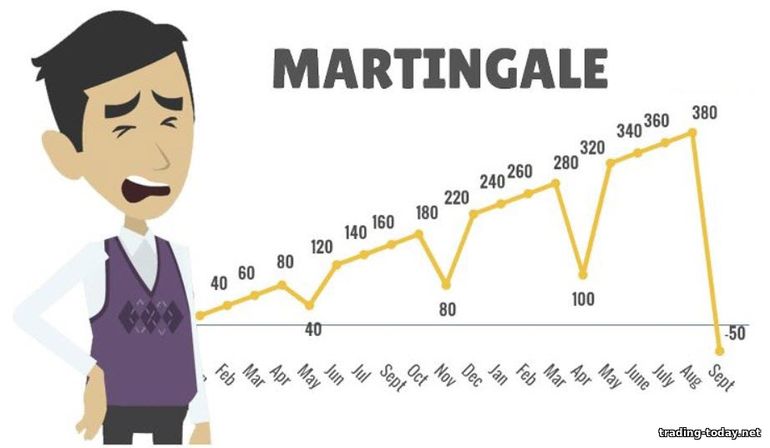
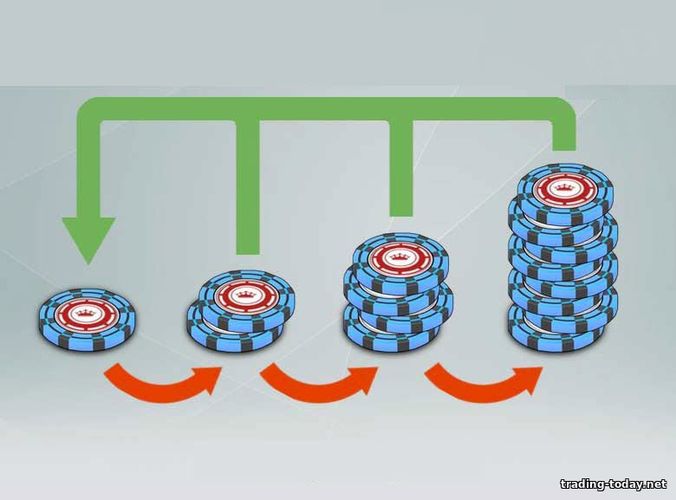
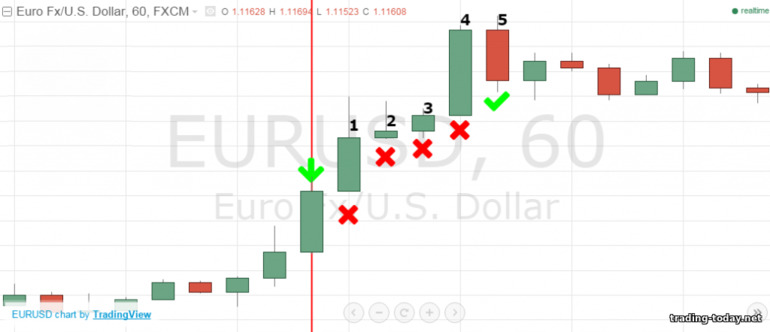
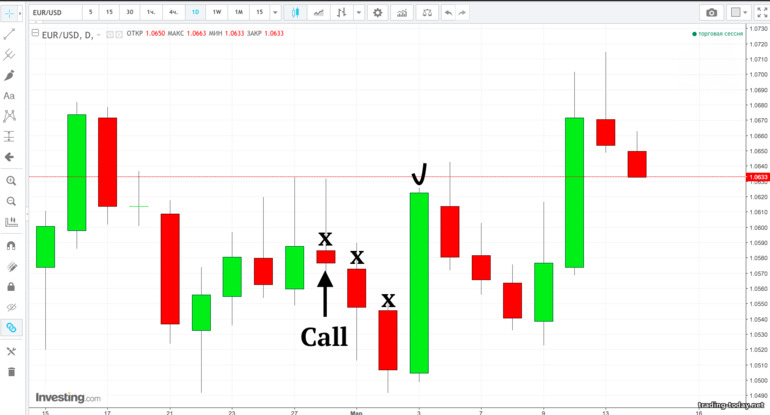

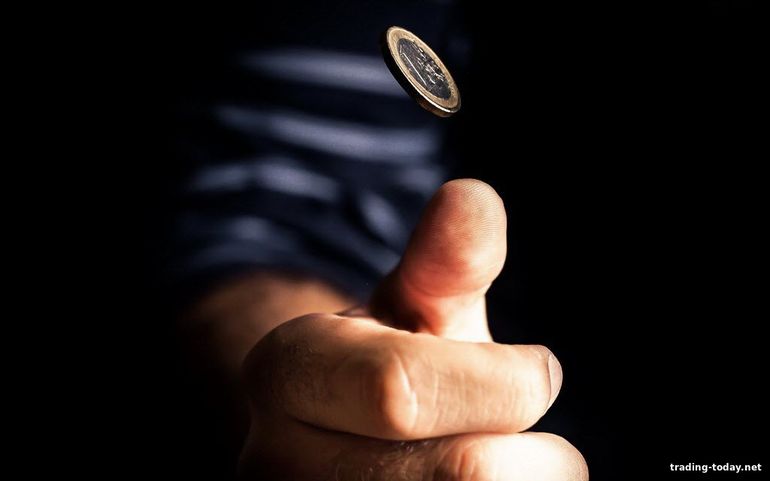
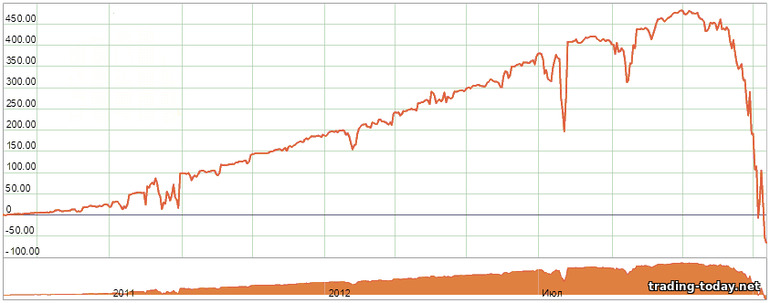

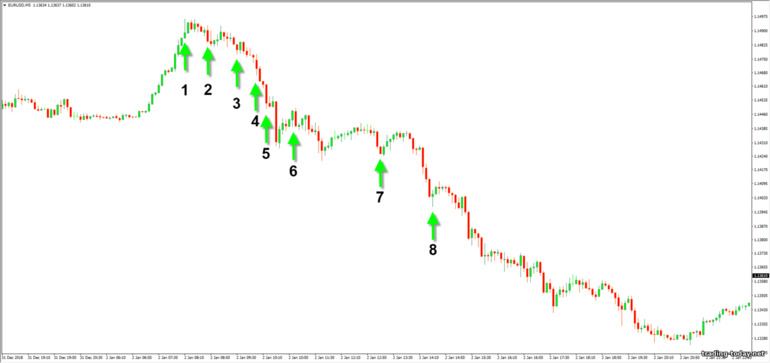
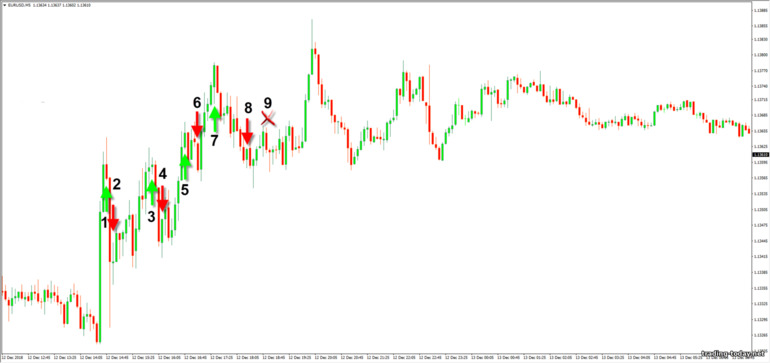

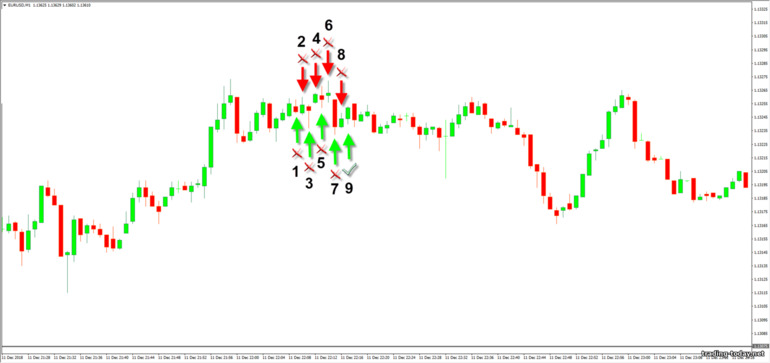

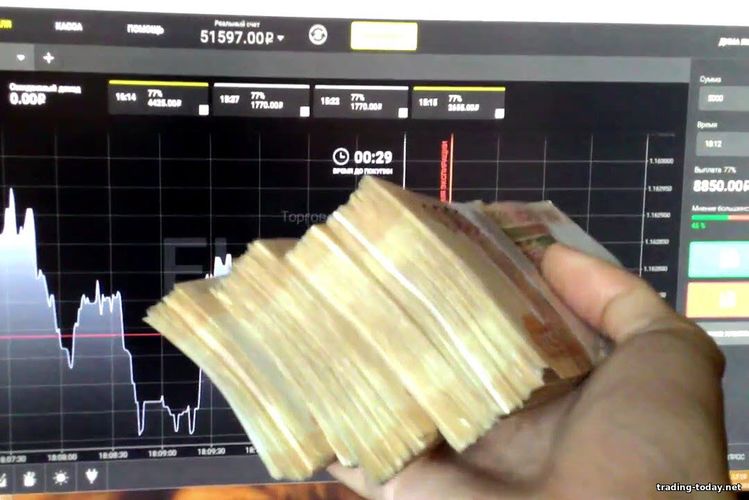


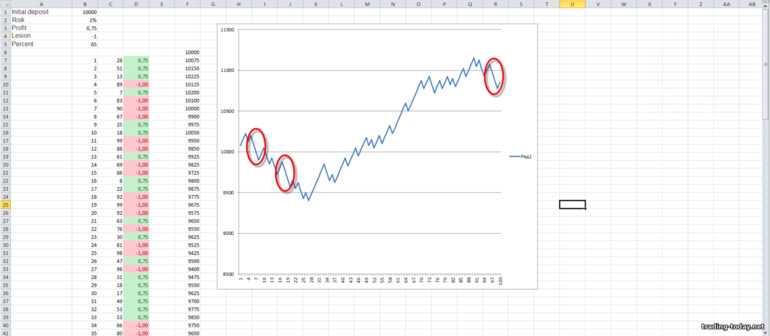
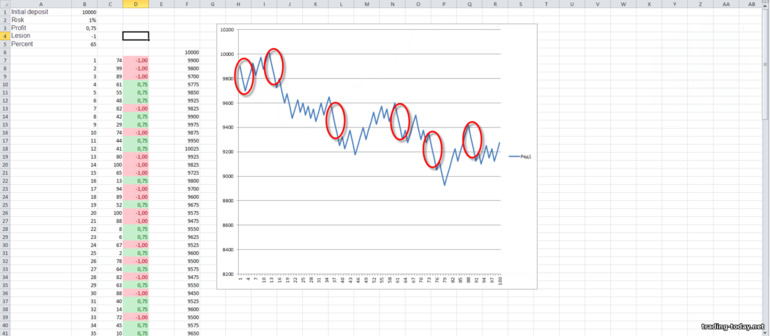
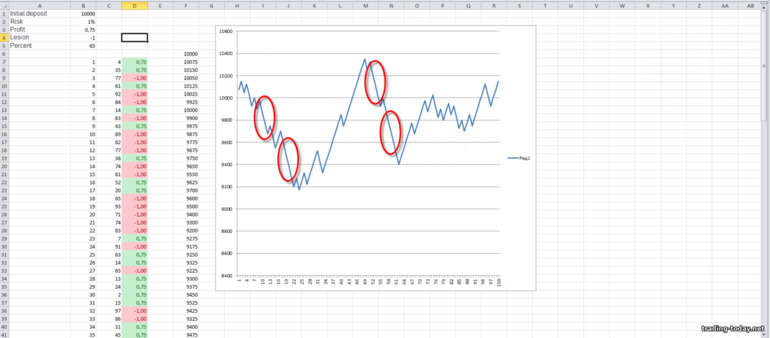



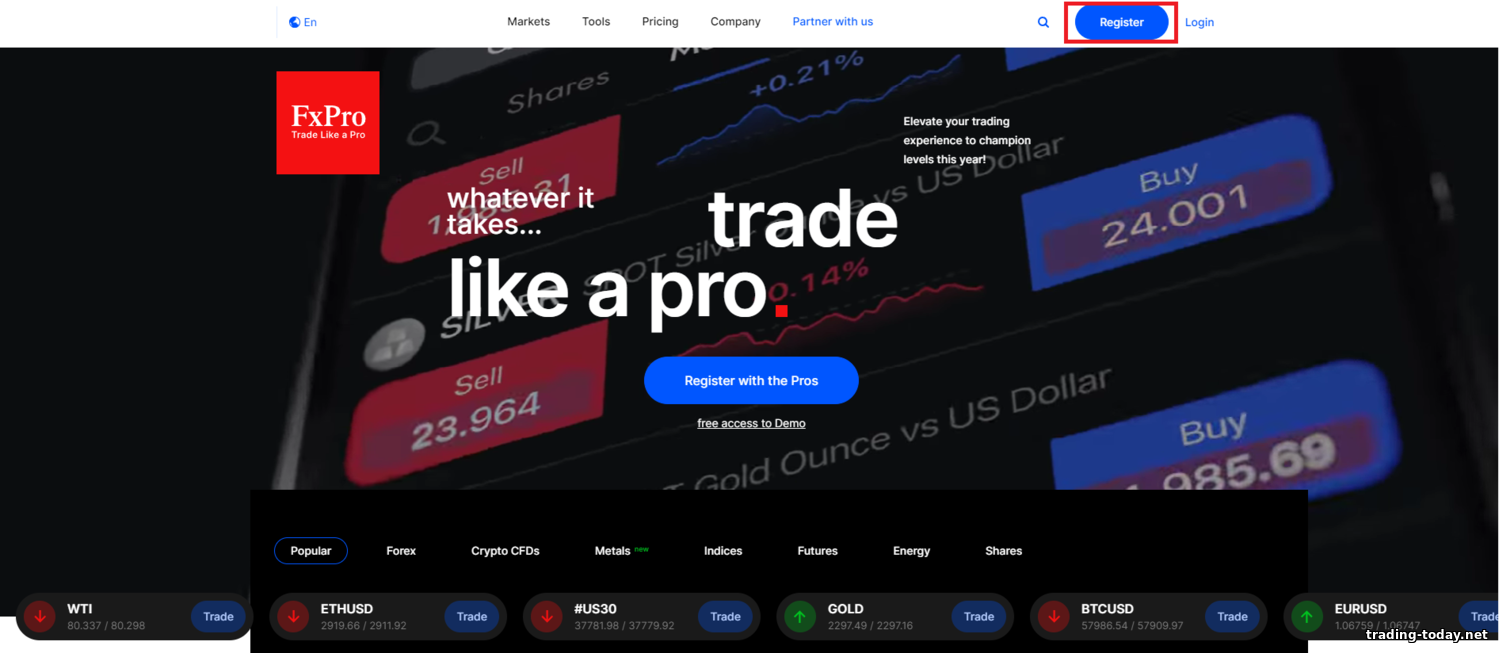



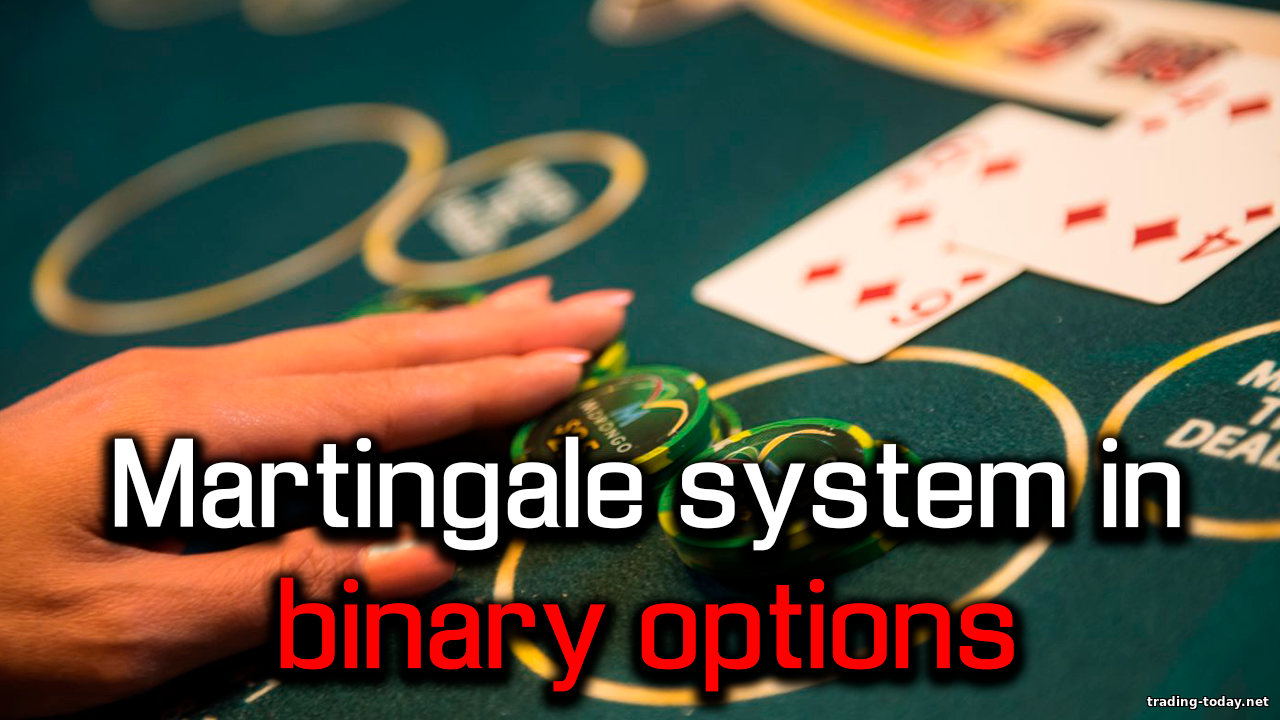
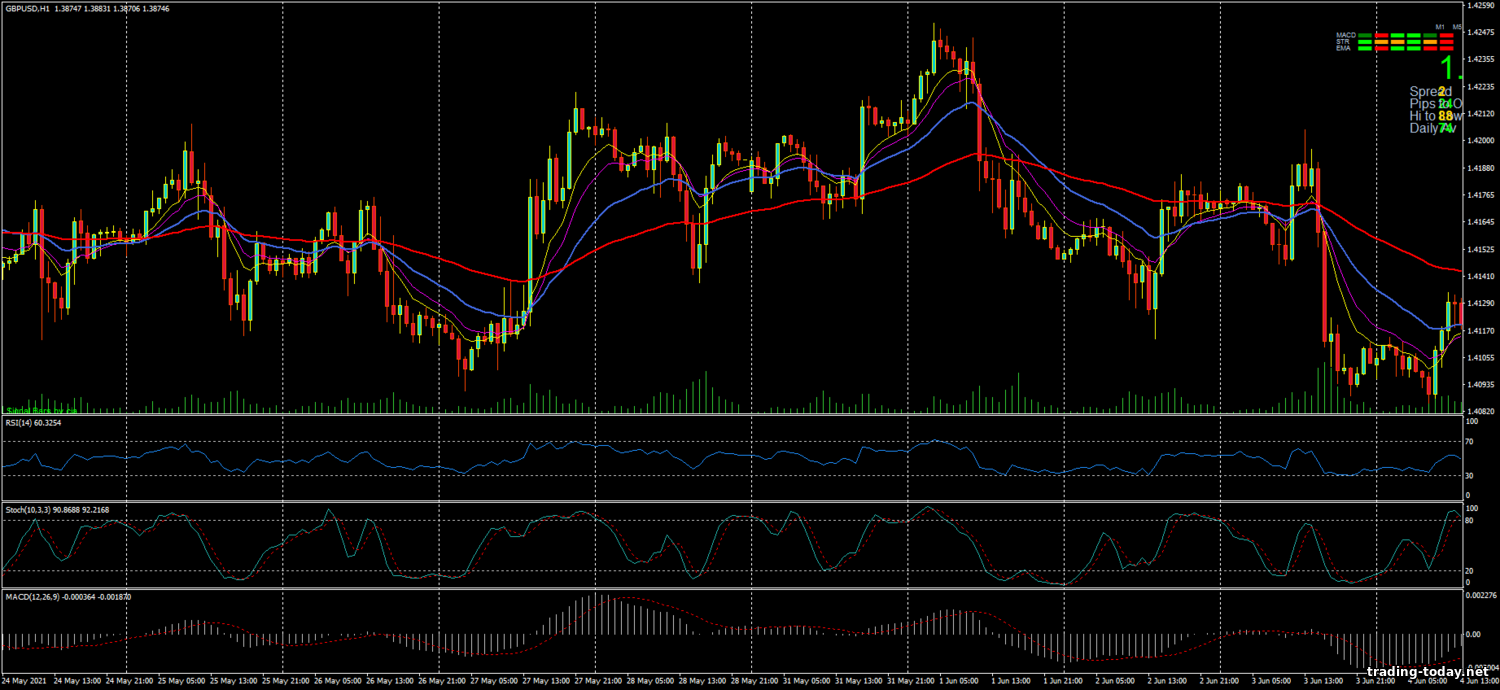

Reviews and comments